Search the Special Collections and Archives Portal
Search Results
David A. Davis Collection of Aerial Photographs
Identifier
Abstract
The David A. Davis Collection of Aerial Photographs (approximately 1990-1999) contains seven black-and-white photographic prints and one black-and-white photographic negative of aerial views of Las Vegas, Nevada. These photographs are reproductions of originals obtained by David A. Davis from the Nevada Department of Transportation, the United States Geological Survey, and Landiscor Real Estate Mapping.
Archival Collection
Erni Cabat Art Prints
Identifier
Abstract
The collection consists of seven numbered art prints, hand signed by Arizona artist, Erni Cabat, with accompanying certificates of authenticity. The prints were created from original gouache paintings of scenes from casino life, and distributed by Nevada Magazine to mark the 50th anniversary of gambling in Nevada in 1981.
Archival Collection
Vicki Cassman Faculty Papers and UNLV Memorabilia
Identifier
Abstract
The Vicki Cassman Faculty Papers and UNLV Memorabilia (approximately 1980-2004) are comprised of commemorative University of Nevada, Las Vegas (UNLV) memorabilia and papers pertaining to UNLV's 25th and 40th anniversaries as well as a 30th anniversary video tape for the Moyer Student Union. The collection also contains papers from the Department of Anthropology and Ethnic Studies history project (ANT 410/610) commemorating UNLV faculty member Claude Warren. The memorabilia in the collection includes a commemorative mug, golf ball, playing cards, and a media kit for the Sam Boyd Stadium and the Thomas & Mack Center.
Archival Collection
Billie Milton Grace Photograph Collection
Identifier
Abstract
The Billie Milton Grace Photograph Collection, approximately 1948 to 1960, consists of twenty black-and-white photographic prints and negatives depicting images of downtown Las Vegas, Nevada, the annual Helldorado Parade, the Marion Hicks family, local labor union dinners, Thunderbird Hotel employees, and various hotels and casinos.
Archival Collection
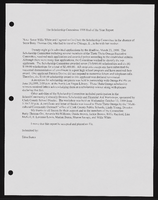
Alpha Kappa Alpha Sorority, Theta Theta Omega Chapter scholarship committee reports
Date
Archival Collection
Description
From the Alpha Kappa Alpha Sorority, Incorporated, Theta Theta Omega Chapter Records (MS-01014) -- Chapter records file.
Text
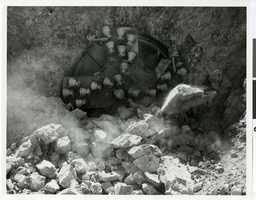
Photograph of the "Mole" Jarva Tunnel Borer breaking through the tunnel on the Las Vegas River Mountain Project, Las Vegas, Nevada, circa 1968-1971
Date
Archival Collection
Description
Image
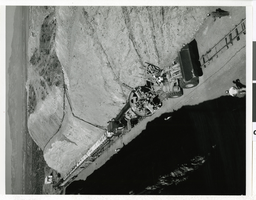
Photograph of the 988 caterpillar loader towing mole and conveyor to the tunnel portal used on the Las Vegas River Mountain Project, Las Vegas, Nevada, circa 1968-1971
Date
Archival Collection
Description
Image
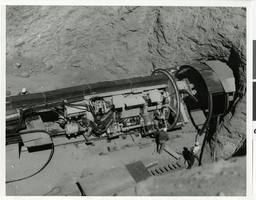
Photograph of the outlet portal showing the mole preparing to walk into the tunnel on the Las Vegas River Mountain Project, Las Vegas, Nevada, circa 1968-1971
Date
Archival Collection
Description
Image
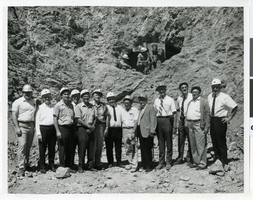
Photograph of Key federal, state and contractor representatives who were on hand when the mole broke through the tunnel, Las Vegas, Nevada, 6-26-69
Date
Archival Collection
Description
Image
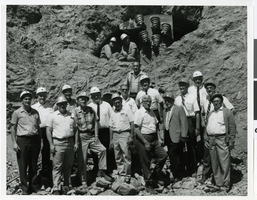
Photograph of Key federal, state and contractor representatives who were on hand when the mole broke through the tunnel, Las Vegas, Nevada, 6-26-69
Date
Archival Collection
Description
Image
